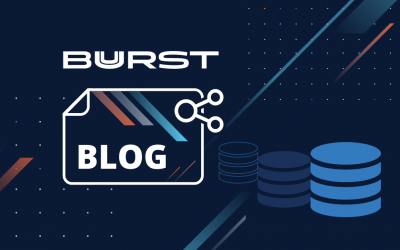Read this post by Buurst SoftNAS CEO & Founder ”Rick Braddy” to learn 7 essential strategies for effective cloud data management.
Cloud migration can be a tricky business. Without careful planning, things can and do go wrong. If you’re in too much of a rush, then you’re liable to skip important steps.
“Through 2022, at least 95% of cloud security failures will be the customer’s fault,” according to Jay Heiser, research vice president at Gartner.
Here are 7 strategies you must formulate for data management success.
Data protection
You must ensure that all company data is fully protected and safe from intruders or catastrophes, whether it’s on your local servers, in a data warehouse somewhere, or on a remote device. Be prepared for ransomware, accidental deletions, and corruption. Without a robust, fully tested data protection strategy that extends to your partners, you could lose crucial data, and an apology or refund will not be enough.
Data security
Do you understand precisely where your data is or how your cloud providers are storing it? Comingling is common practice. If you want to ensure that regulations are adhered to, then you need to check that your data is separate with stringent access controls that include proper user authentication measures. Many popular cloud services lack granular controls.
Rapid data recovery
When data problems strike, you must be able to get up and running again as quickly as possible, because downtime is money lost. Think about storage snapshots and version rollback. Don’t rely solely on current backups for the data and apps that are most important to your business operations.
Data performance
What happens when the network buckles under the weight of too many simultaneous requests, or your cloud provider has a hardware failure? Latency issues and lethargic performance are going to impact your apps and customers. You need some control over performance, so you can make changes to ensure response times meet user expectations as demand grows.
Data availability
Failures are inevitable from time to time. There will be mistakes and unforeseen problems, but how we deal with them can make all the difference. Replicate your most valuable data and establish a failsafe, so you can seamlessly switch to it when you need to. Ask for an SLA from your provider that guarantees data availability.
Multi-cloud interoperability
In the race to boost efficiency and cut costs, most businesses have a multi-cloud environment. In fact, Gartner predicts that 90% of organizations will adopt a hybrid infrastructure by 2020. Don’t get stuck with proprietary APIs and services. Keep your options open, think about how easy it will be to change vendors in the future, and protect your flexibility.
Disaster recovery
Whether one of your developers makes a mistake with a code commit, or one of your cloud providers is breached, there are times when your data may be compromised and even your backups may be exposed and unrecoverable. Maintain an offsite copy of everything you require to get the infrastructure back up and running and you can reduce a major disaster to a minor one.
Under pressure to scale up and get immediate results without spending big, some companies will inevitably take shortcuts. But, if you properly assess the risk and potential costs long term, you’ll understand why it’s worth taking your time to draw up comprehensive, robust strategies for data management.
For more information, be sure to read my article in Network World, “7 common cloud data management pitfalls to avoid.”
Check Also
Data Management Software
Pillars of cloud data management
Cloud data management strategy
Cloud File Data Management Pitfalls







